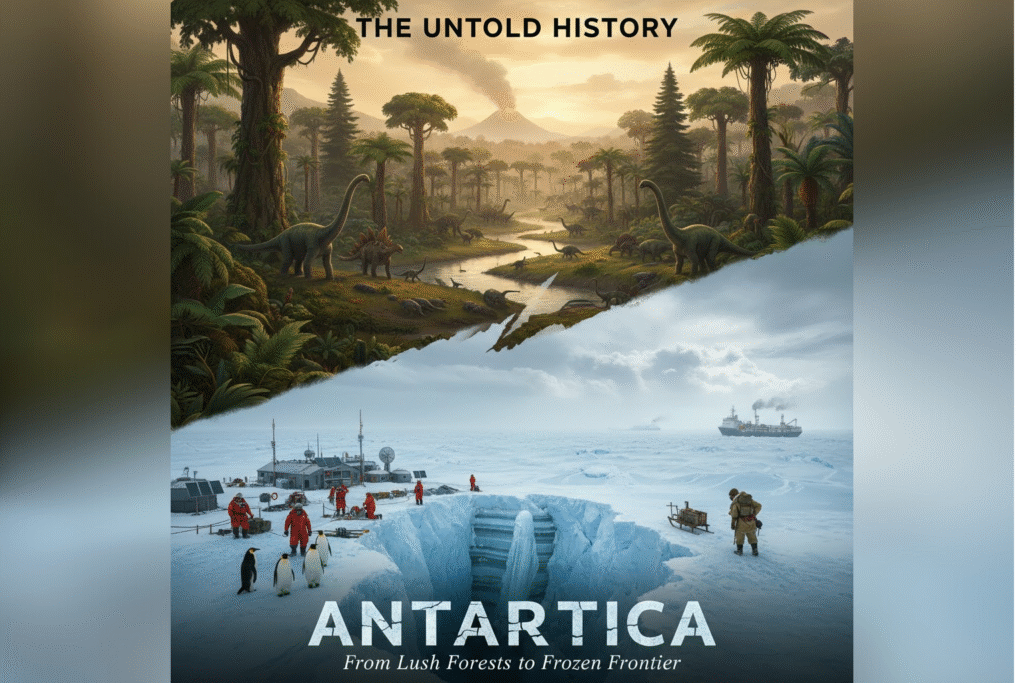Title: The Untold History of the Coldest Place on Earth
Antarctica carries a name that evokes deep cold. The place turns breath into frost and eyelashes into spikes of ice. Beneath layers of snow and ice lies a history full of twists and turns that few people grasp fully. This continent stands as the coldest spot on the planet. It also holds deep mysteries. Those mysteries reach back long before any human presence.
Long ago millions of years in the past Antarctica felt warm. Forests spread across it along with rivers and all sorts of life. Dinosaurs roamed those lands. Trees stood tall in spots now buried under endless ice. At that time the land formed part of a vast supercontinent known as Gondwana. It linked up with regions that today make South America Africa India and Australia. Travel from one area to another seemed possible on foot. That journey would take a few million years though.
The Earth keeps shifting all the time. Antarctica drifted southward over vast periods. The chill set in gradually until ice sheets formed around 34 million years back. Forests disappeared completely. Dinosaurs had vanished even earlier. What remained turned into the icy wasteland seen now. Temperatures there plunge past minus 80 degrees Celsius at times. Breath solidifies right as it escapes the mouth in such cold.
Humans knew nothing of Antarctica for most of their existence. Ancient Greeks speculated about a southern landmass to balance the globe. They named it Terra Australis Incognita for the unknown southern territory. No one laid eyes on it back then. The idea lingered as a puzzle on ancient maps near the worlds edge.
Exploration surged in the 1800s with bold sailors seeking fresh territories. In 1820 observers caught the first glimpse of Antarctica. Debate lingers over the exact discoverers whether Russian British or American vessels. That sighting shifted human understanding forever. The last continent entered the known world.
Spotting the land differed sharply from enduring it. Early ventures toward the South Pole met brutal weather. Winds howled without mercy. Blizzards blinded vision. Frostbite gnawed at flesh. Hunger weakened resolve. Explorers pressed on regardless. The early 1900s earned the title of the Heroic Age for Antarctic efforts.
Roald Amundsen from Norway arrived at the South Pole first in 1911. His success marked a major milestone. Weeks afterward Robert Falcon Scott of Britain touched the same point. His group failed to return though. Death claimed them on the way back. Ernest Shackleton led another key trip around then. His ship Endurance fell to crushing sea ice. He still rescued his full crew after months in the harsh freeze. Those events stretch belief yet they happened. They show the lengths people reach for new knowledge.
Attention turned from bold treks to scientific work after those feats. Experts saw Antarctica as more than frozen expanse. It offered clues to the planets past. Nations united in the 1950s for studies during the International Geophysical Year from 1957 to 1958. That effort birthed the Antarctic Treaty of 1959. The pact declares no ownership claims. It bans conflict and arms. Peace and research define the place instead.
Dozens of stations dot the continent today. Researchers stay through all seasons. They examine climate shifts penguins and old ice cores. Those cores reveal the planets history. Antarctic ice traps about 70 percent of global fresh water. Analysis lets scientists peer back thousands of years. Climate patterns emerge from that deep record.
Antarctica involves more than data and facts though. Mysteries abound under the surface. Hidden lakes and mountains wait below the ice. Life forms untouched by sun might thrive there. The continent acts like the final edge of exploration. It serves as a frozen vault for Earths recollections.
The term coldest place on Earth brings more than snow and penguins to mind. Ancient woods and daring adventurers fit the picture too. So do researchers probing ice bound enigmas. Antarcticas tale remains partly hidden not from lack of effort. It unfolds still through fresh finds. The air there almost whispers the past.


